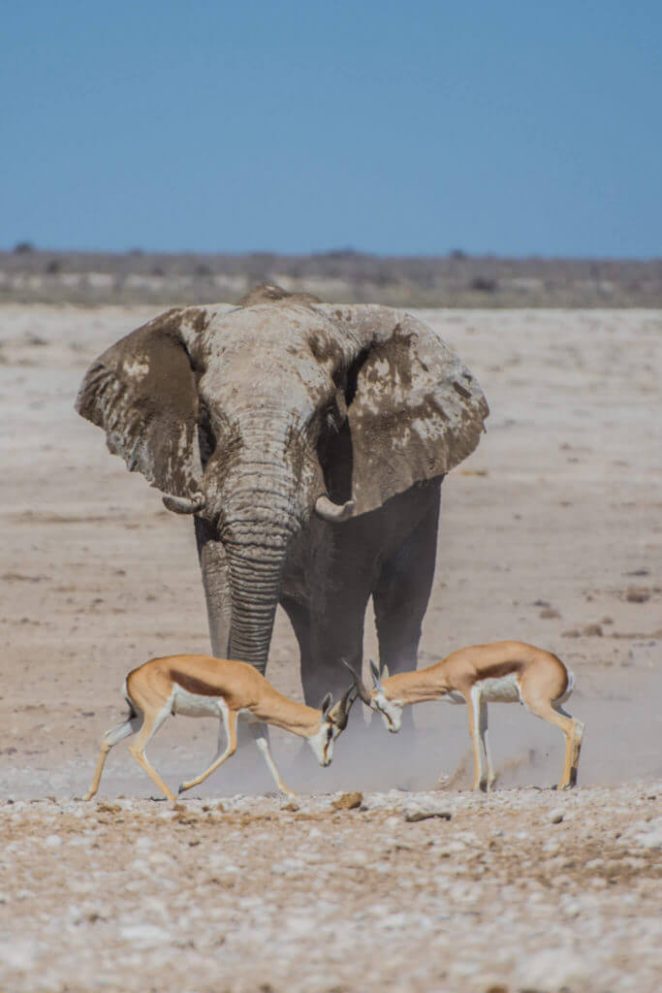Desert Vistas and Sand Sculptures Dominate Namibia
Namibia affords visitors the chance to immerse in a desert landscape that is similar to the American Southwest, but different enough to warrant the long trip across the pond.
Northern Namibia—A Harsh existence for man and beast
In the Northwest corner of the country, the dry landscape is punctuated with low mountains. It looks like Arizona until the herd of desert elephants ambles by. It’s remarkable that the animals in this region have learned to adapt to the extremely harsh conditions.
An easy base for exploring the area is Wilderness Safari’s Damaraland Camp. Tucked in the Huab River Valley, the camp offers ten moderately priced traditional safari cottages. Safari guides are adept at finding the elephants, kudos and springbok that call the area home. On the morning game drive guests also have the option of traveling to visit a site where rock art formations dating from 2,000 to 6,000 years ago are carved, or to an area that offers the country’s best chance to see an elusive rhino, one of the “Big Five” game animals.
In the afternoon take the opportunity to visit the local farm. Ben, one of 20 members of the family that lives on the property shares the challenges of a typical local. He’ll tell the story of how the elephants have ruined their garden and in essence their livelihood from the land. The size and state of the housing on the farm will give any visitor insight into what life in Africa is like away from the luxury safari camps.
Southern Namibia—Home to the World Famous Sand Dunes
The reddish golden sand dunes of Sossusvlei, located in the world’s oldest desert, the Namib are the highlight of any visit to Namibia.Experiencing the dunes at sunrise is worth leaving the Little Kulala camp at 5:15 a.m. On the drive to Sossusvlei, the sky will amaze with colors of blue, gray, pink and purple, and the shadows that play across the dunes makes each day a different experience with these monstrous sand formations. The setting is a photographer’s dream.The dunes, some of which climb for over 1000 feet, developed over millions of years. It is believed that large amounts of sand found its way to the Atlantic Ocean courtesy of the Orange River. The sand was moved north by the Benguela current and dumped back onto land by strong surf, thereby creating coastal dunes. Through time, the wind has moved the wind further and further inland. Today wind constantly reshapes the dunes, resulting in a landscape of changing sand sculptures.

Visitors are encouraged to get up close and personal with the dunes and walking up “Big Daddy”; at 1100 feet high is an invigorating experience. Hiking in the sand is difficult, but the reward is a fun (quick) run or slides down from the top.
Wilderness Safaris offers camps in the only reserve with direct access to Sossusvlei. To book a trip to Namibia, contact Natural Migrations, Wilderness Safari’s tour operator in the U.S.
You may also read: Zanzibar: Historic Island And Mythical town of Stones and Spices


